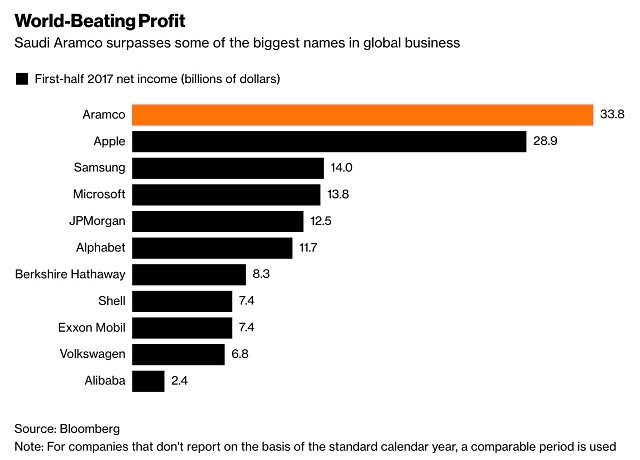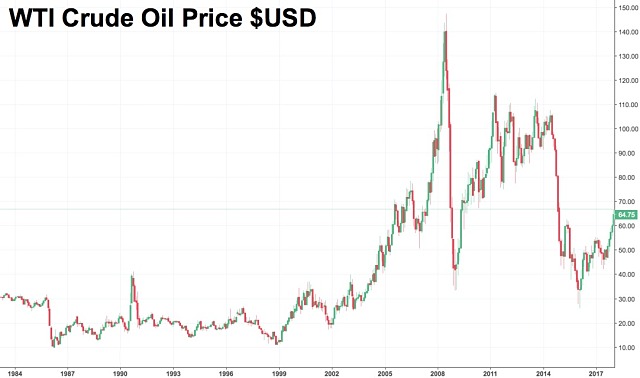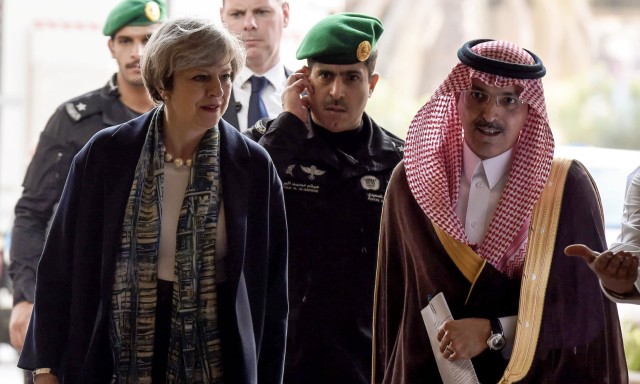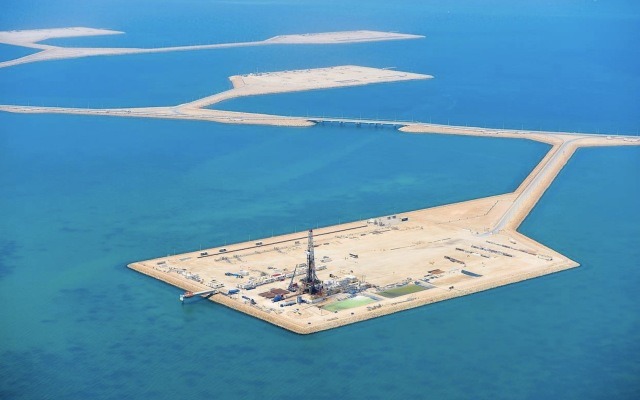The world’s biggest IPO feels the pressure of expectation

Saudi Aramco’s initial public offering values the company between US$1-2 trillion.
The oil market is buzzing with speculation — and for once, it has nothing to do with oil prices.
The world’s largest single producer of oil and Saudi Arabia’s most gleaming crown jewel, Saudi Aramco, is preparing to become a public company, and depending on who you believe, the valuation is touted to be anywhere between US$1-2 trillion.
That’s quite a difference and even at the lower-end of the range would put Aramco at the very top of world markets in terms of market capitalisation.
According to leaked documents obtained by Bloomberg, Aramco dwarfs all its Western competitors including Western oil majors such as Exxon, Chevron, Shell and British Petroleum (BP), as well as China’s big three: Sinopec, CNPC and PetroChina.
Saudi Aramco leading the pack
Its net income in the first half of 2017 was almost US$34 billion, putting its annual total somewhere in the region of US$68 billion.
By comparison, Exxon and Shell both generated around US$15 billion each on annual basis last year. BP is similarly lacklustre in comparison to Aramco with an annual net income of £16 billion (US$24 billion) for 2017.

Two questions immediately spring up in investor minds when hearing these figures — are these figures genuine, and if they are, what does it mean for the oil market?
The answer to the first question (according to Bloomberg) is a resounding “yes”.
The reason why many investors are apprehensive about the veracity of these numbers is that the House of Saud and Aramco’s top executives have made a strenuous effort over the past 40 years to keep Aramco’s books in the shade, away from prying eyes of US, European and Russian oilers.
Furthermore, Saudi Aramco’s close relationship with the House of Saud has raised financial, legal and regulatory issues that could make any Western market traction unviable, or simply undesirable for various vested parties.
Most importantly, its activities have been kept private to preserve a competitive advantage and to allow OPEC to wield more influence when setting production quotas.
The cartel in the oil market
Saudi Arabia remains OPEC’s largest contributor by far (10 million barrels of oil per day) compared to the 2nd largest, Iraq which produces around 4.5 million barrels per day.
Saudi Aramco is an absolute powerhouse, which dwarfs not only that of all other oil companies globally, but also, any publicly-listed company including the world’s largest five — who by the way, all happen to be technology-focused (Alphabet, Apple, Facebook, Amazon and Microsoft.

Which brings up the second question: what does Aramco’s numbers (and upcoming IPO) mean for global markets?
The answer to this is rather complex and it all depends on the actions of Saudi Arabia’s defacto ruler Crown Prince Mohammed bin Salman, who originally floated the idea of privatising Saudi’s largest commercial entity back in January 2016. At the time, oil prices were cascading to their record lows of around $40 per barrel.
With oil prices at $40/bbl, every oil producing country on Earth was struggling to make ends meet, not just the Saudis.
However, with prices now closer to $70/bbl (and rising) the rationale for a huge revenue-raising IPO makes less sense and could explain why talk of Aramco’s imminent blockbuster listing has stalled.

Oil price history since the 1980’s.
If Aramco does indeed decide to list for reasons other than capital raising, that alternative reason could be to send a clear signal to the rest of the world that Saudi Arabia is ready to enter the modern financial market arena. And also to participate in free-market economics as some critics have put it: “to ready the kingdom for the post-oil age”.
If the intended IPO does go ahead it would only scythe off around 5% into public hands and net the House of Saud around US$50-100 billion — not exactly pocket change, but also not enough to change anything significantly considering the Saudi’s sovereign fund has at least five-times that already in the kitty.
Public or private?
Either way, if the Saudis do go ahead with the IPO even at the lower bounds of the estimated range, the commercial result would more than double the current record set by Chinese internet retailer Alibaba when it listed in 2014 and netted US$25 billion after floating 15% of its shares on the New York Stock Exchange (NYSE).
Given the lack of confirmed information relating to Aramco’s financial metrics, investors still don’t know exactly when (or where) Aramco will be offering its shares. The sale, including an international listing in New York, London or Hong Kong, was initially scheduled for 2018 but has now been delayed until at least 2019.
Several oil market analysts have tipped the IPO to be a cross-country listing with a predominant base in Saudi Arabia’s domestic Tadawul exchange, although if Aramco’s motive is raising revenues, then an international listing would arguably be more lucrative.
However, the downside for the Saudis is that listing on the London Stock Exchange (LSE) or NYSE would automatically precipitate stringent disclosure requirements and would likely mean foreign ownership of domestic Saudi assets that could be viewed as foreign meddling by protective power-mongers.
Work to dilute this particular issue has already begun with British Prime Minister Theresa May visiting Riyadh with LSE chief executive officer Xavier Rolet in tow, last year.

Theresa May with Saudi finance minister, Mohammed al-Jadaan, at the Saudi Stock Exchange.
At the time, reporters called the rendezvous a “charm offensive” and a “wooing exercise”, with the flexibility of LSE’s listing rules a potential bargaining chip, backed by political clout of the highest order.
Market constants
It would seem that, just like in the GFC days, some companies are “too big to fail”, and by the same token, some companies are too big to sail without involving the top political brass.
From a domestic perspective, if Saudi Aramco goes public on an internationally-recognised stock exchange such as the LSE or NYSE, thereby welcoming a flood of foreign investors that pump billions into its largest company (and ceding some control of its most highly-prized asset to foreigners), there will have to be greater transparency and less occultism when it comes to balancing the books.

Saudi Aramco’s Manifa facility, Saudi Arabia.
You can’t claim to be modernising your economy and creating entrepreneur-friendly open markets, only to baulk at growing foreign ownership at the first hurdle.
With this saga still ongoing, no firm listing dates set and oil prices gradually making new highs on the back of both demand and supply-side factors, Saudi Aramco’s IPO is generating more investor attention with every soundbite.
As both hydrocarbon-savvy investors and oil price speculators stand by in anticipation of what happens next, the weight of expectation is building upon the largest oil producer in the world.
